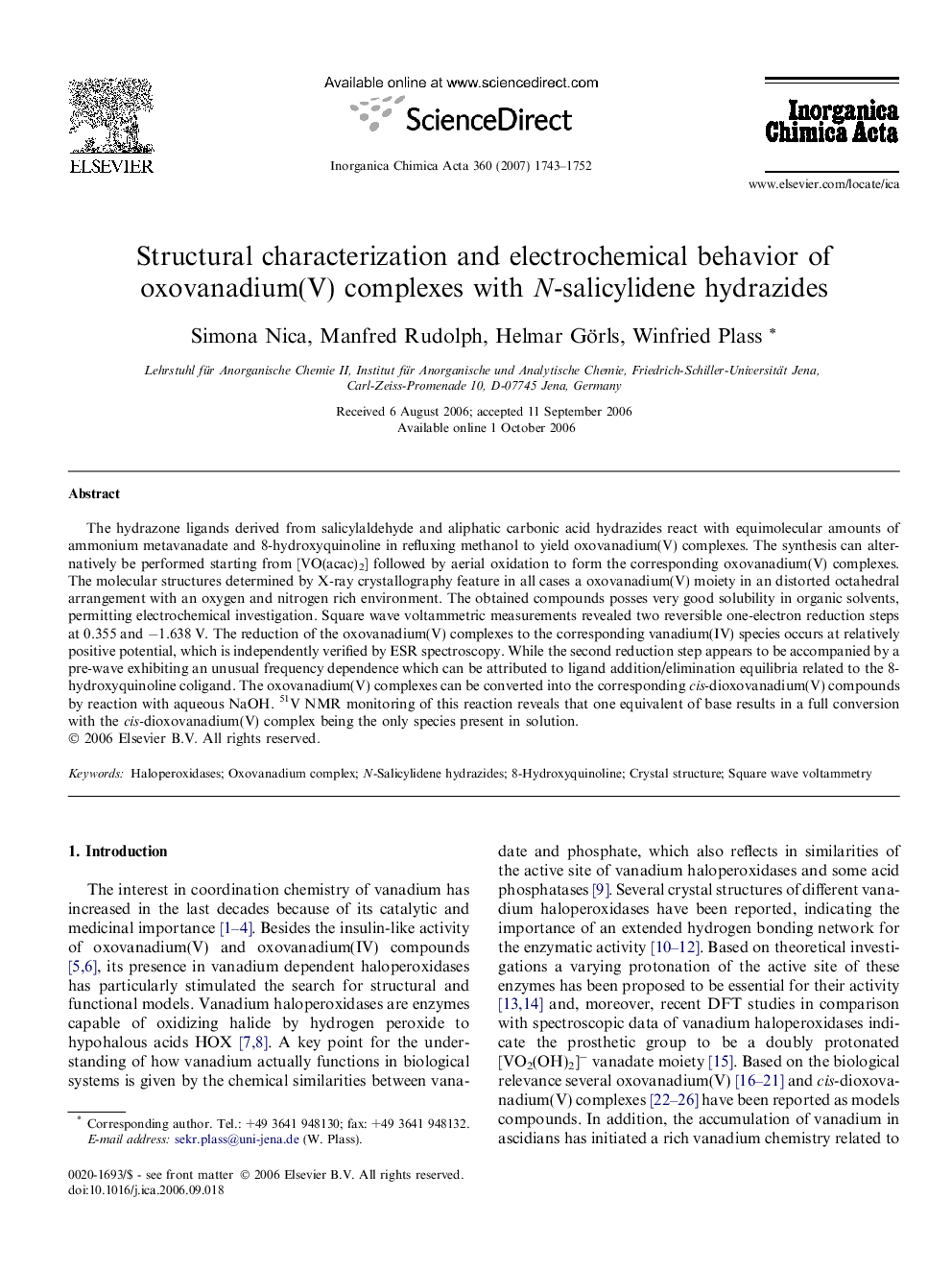| Article ID | Journal | Published Year | Pages | File Type |
|---|---|---|---|---|
| 1311700 | Inorganica Chimica Acta | 2007 | 10 Pages |
The hydrazone ligands derived from salicylaldehyde and aliphatic carbonic acid hydrazides react with equimolecular amounts of ammonium metavanadate and 8-hydroxyquinoline in refluxing methanol to yield oxovanadium(V) complexes. The synthesis can alternatively be performed starting from [VO(acac)2] followed by aerial oxidation to form the corresponding oxovanadium(V) complexes. The molecular structures determined by X-ray crystallography feature in all cases a oxovanadium(V) moiety in an distorted octahedral arrangement with an oxygen and nitrogen rich environment. The obtained compounds posses very good solubility in organic solvents, permitting electrochemical investigation. Square wave voltammetric measurements revealed two reversible one-electron reduction steps at 0.355 and −1.638 V. The reduction of the oxovanadium(V) complexes to the corresponding vanadium(IV) species occurs at relatively positive potential, which is independently verified by ESR spectroscopy. While the second reduction step appears to be accompanied by a pre-wave exhibiting an unusual frequency dependence which can be attributed to ligand addition/elimination equilibria related to the 8-hydroxyquinoline coligand. The oxovanadium(V) complexes can be converted into the corresponding cis-dioxovanadium(V) compounds by reaction with aqueous NaOH. 51V NMR monitoring of this reaction reveals that one equivalent of base results in a full conversion with the cis-dioxovanadium(V) complex being the only species present in solution.
Graphical abstractTwo different routes lead to mixed-ligand oxovanadium(V) complexes [VO(salhyn)(Q)] derived from N-salicylidene hydrazide ligands and 8-hydroxyquinoline with interesting electrochemical properties.Figure optionsDownload full-size imageDownload as PowerPoint slide
